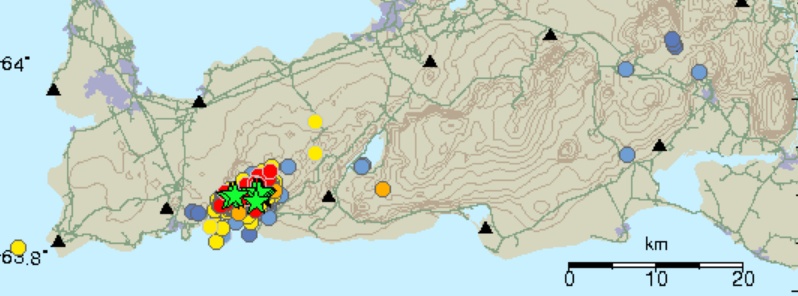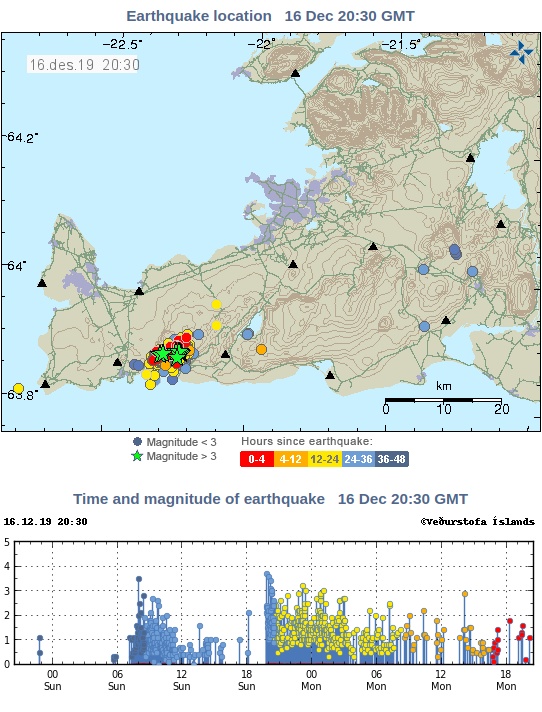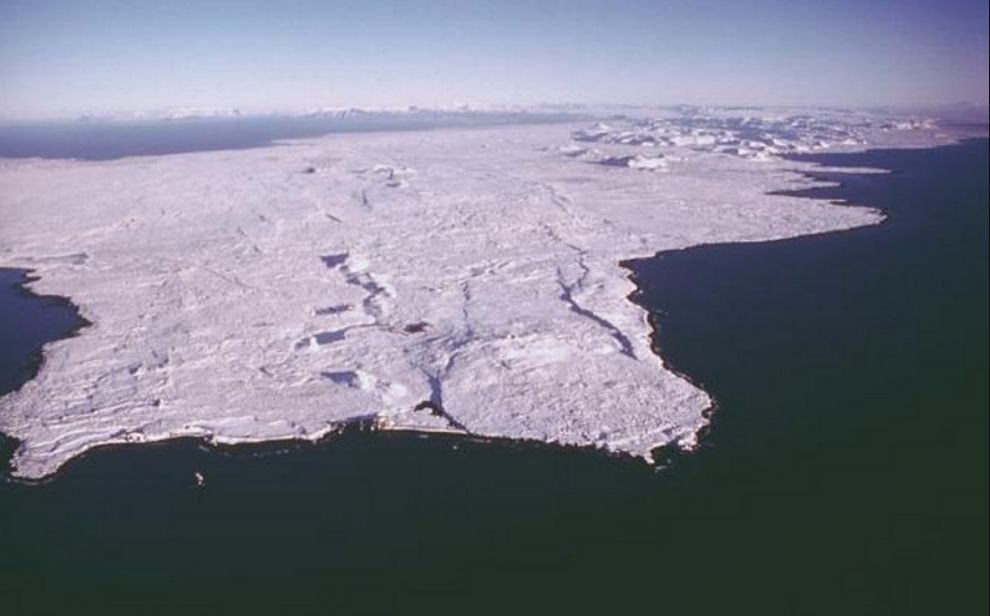More than 1 200 earthquakes detected on Reykjanes Peninsula, Iceland

An earthquake swarm is ongoing at Fagradalsfjall on the Reykjanes peninsula, Iceland since Sunday morning, December 15, 2019. Nine of the tremors measured between M3.0 and M3.7. There are no signs of volcanic tremor, according to the Icelandic Met Office.
The swarm started at 07:59 UTC on December 15 with a M3.5. Although the activity weakened by noon, it started increasing again around 20:00 UTC.
The largest quakes occurred afterward, reaching M3.6 and M3.7. Just 20 minutes later, a third M3.4 took place. Three other quakes over M3.0 have happened since 23:00 on Sunday.
"The earthquake activity can be caused by volcanic or tectonic activity, even both. In this case, we believe it is due to tectonic stress that is being released through the earthquakes."
Palmadottir explained that such swarms may go on for hours, days, and even weeks.
"We see no signs of volcanic tremor, but we are following that very closely, especially since it is so close to inhabited areas."

Image credit: IMO
Geological summary
The Reykjanes volcanic system at the SW tip of the Reykjanes Peninsula, where the Mid-Atlantic Ridge rises above sea level, comprises a broad area of postglacial basaltic crater rows and small shield volcanoes.
The submarine Reykjaneshryggur volcanic system is contiguous with and is considered part of the Reykjanes volcanic system, which is the westernmost of a series of four closely-spaced en-echelon fissure systems that extend diagonally across the Reykjanes Peninsula.
Most of the subaerial part of the volcanic system (also known as the Reykjanes/Svartsengi volcanic system) is covered by Holocene lavas.

Photo by Oddur Sigurdsson, 1998 (Icelandic National Energy Authority).
Subaerial eruptions have occurred in historical time during the 13th century at several locations on the NE-SW-trending fissure system, and numerous submarine eruptions at Reykjaneshryggur dating back to the 12th century have been observed during historical time, some of which have formed ephemeral islands.
Basaltic rocks of probable Holocene age have been recovered during dredging operations, and tephra deposits from earlier Holocene eruptions are preserved on the nearby Reykjanes Peninsula. (GVP)
Featured image credit: IMO

Commenting rules and guidelines
We value the thoughts and opinions of our readers and welcome healthy discussions on our website. In order to maintain a respectful and positive community, we ask that all commenters follow these rules:
We reserve the right to remove any comments that violate these rules. By commenting on our website, you agree to abide by these guidelines. Thank you for helping to create a positive and welcoming environment for all.